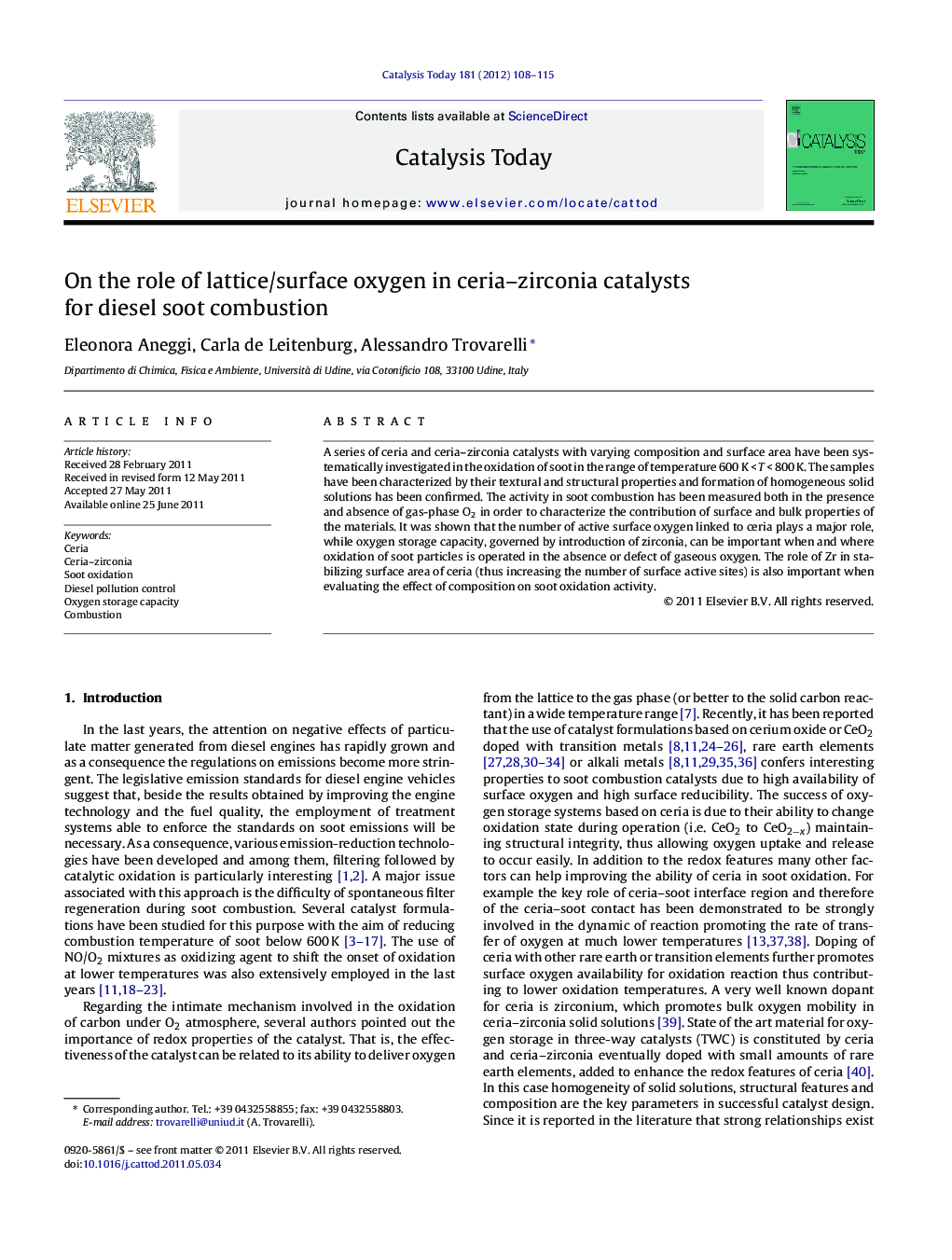| Article ID | Journal | Published Year | Pages | File Type |
|---|---|---|---|---|
| 55447 | Catalysis Today | 2012 | 8 Pages |
A series of ceria and ceria–zirconia catalysts with varying composition and surface area have been systematically investigated in the oxidation of soot in the range of temperature 600 K < T < 800 K. The samples have been characterized by their textural and structural properties and formation of homogeneous solid solutions has been confirmed. The activity in soot combustion has been measured both in the presence and absence of gas-phase O2 in order to characterize the contribution of surface and bulk properties of the materials. It was shown that the number of active surface oxygen linked to ceria plays a major role, while oxygen storage capacity, governed by introduction of zirconia, can be important when and where oxidation of soot particles is operated in the absence or defect of gaseous oxygen. The role of Zr in stabilizing surface area of ceria (thus increasing the number of surface active sites) is also important when evaluating the effect of composition on soot oxidation activity.
Graphical abstractRole of lattice/surface oxygen in soot oxidation over ceria–zirconia.Figure optionsDownload full-size imageDownload high-quality image (128 K)Download as PowerPoint slideHighlights► The total surface oxygen availability is important mainly under lean atmosphere. ► Ceria provides active surface oxygen at lower temperature through a redox route. ► Under O2 poor atmosphere oxygen storage capacity of ceria–zirconia plays a key role. ► An inverse dependence of soot oxidation activity on surface area was observed.
